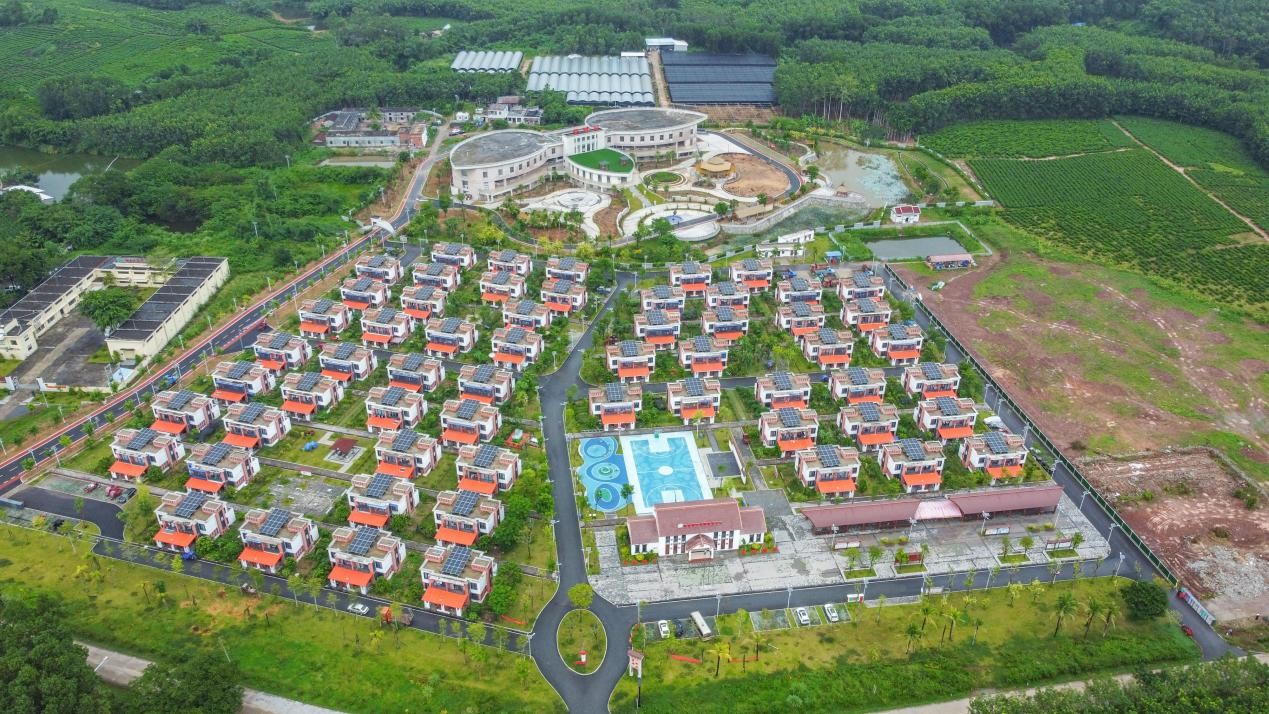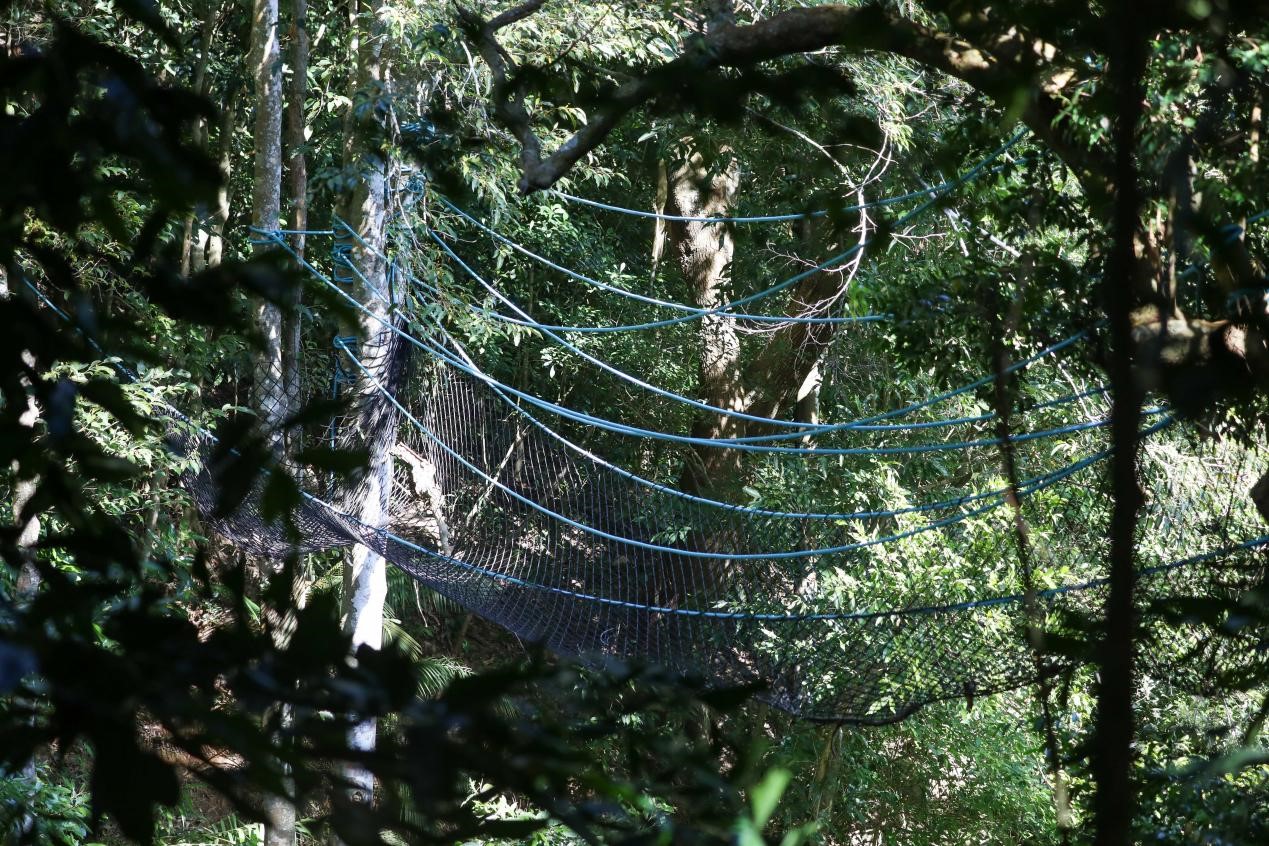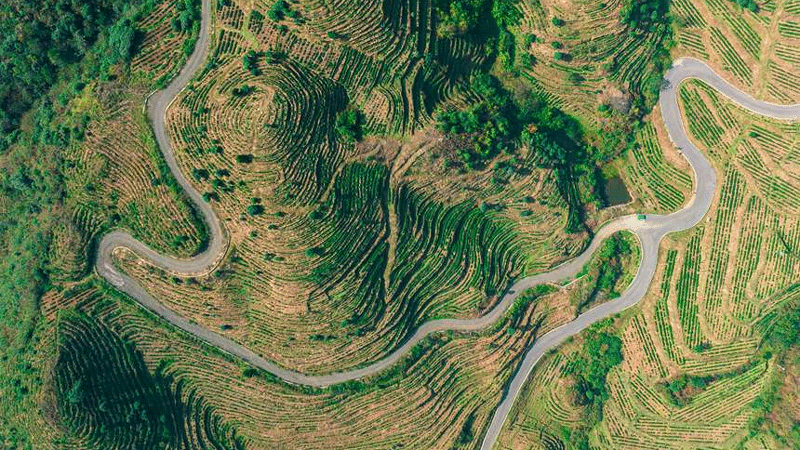Hainan Tropical Rainforest National Park makes progress in ecological conservation
The Hainan Tropical Rainforest National Park, located in the central part of south China's Hainan province, makes up around 1/7 of the province's land area with over 4,400 square kilometers.
It boasts one of the most concentrated, best-preserved and largest contiguous tropical rainforests in China, and is the only habitat in the world for Hainan gibbons, a critically endangered species.
Since the national park was established in October last year, Hainan has strengthened the restoration of tropical rainforests, carrying out ecological relocation projects in core protected areas, adopting differentiated protection and management measures and building ecological corridors.
"Animals that were once uncommon to see are frequently observed nowadays, and the range of activities of those that are common have expanded," said Huang Haijing, a forest ranger from the Wuzhi Mountain sub-bureau of the management bureau of the Hainan Tropical Rainforest National Park.
According to Huang, the area of rainforests on Hainan Island shrank drastically due to the rapid population growth and economic development in the 1970s and 1980s, which resulted in a sharp decline in the number of wildlife highly dependent on the rainforest ecology.

Photo taken on Sept. 21, 2022 shows Xin'gaofeng village in Baisha Li autonomous county, south China's Hainan Province. It is one of the first villages to implement the ecological relocation for the construction of the Hainan Tropical Rainforest National Park. (Photo by Sun Shijie/People's Daily Online)
Since Hainan set up a pilot area of the tropical rainforest national park in 2019, the restoration of rainforests has become a top priority.
According to a plan for ecological relocation issued by the province in March 2020, 11 villages in four cities and counties were included in the core protected areas of the national park. A total of 1,885 residents from 470 households needed to be relocated.
Li Kaiwen, deputy head of the Forestry Department of Hainan Province, said that the ecological relocation in the core protected area would be finished in two rounds.
The first round of relocating 118 households in the three villages in Baisha Li autonomous county had been finished in 2020, and the residents in the rest eight villages are expected to be relocated before the end of this year, Li said.
To ensure smooth relocation and better lives for the residents involved, relevant counties and cities provided young crops, new houses and public service jobs for the relocated, and tailored specific plans to ensure employment.

Photo shows the scenery in the Hainan Tropical Rainforest National Park. (Photo courtesy of the National Forestry and Grassland Administration)
For instance, Baisha Li autonomous county offered 5,000 mu (333 hectares) of rubber plants for 500 villagers and has been actively developing the fungi industry.
Wuzhishan city and Baoting Li and Miao autonomous county allocated commercial front stores and market stalls to relocated residents and launched vocational training sessions for them.
Dongfang city built featured towns and tourist attractions to encourage the relocated residents to engage in tourism services, catering and transportation industries.
While guiding the relocation of residents, Hainan has demarcated functional zones in and around the national park and implemented differentiated conservation and management measures.
After the villagers moved out of the core protected area, the province began ecological corridor construction in an attempt to return habitats to animals and plants in the rainforests.

Photo taken on Dec. 2, 2021 shows a manmade ecological corridor for gibbons in the Hainan Tropical Rainforest National Park. (Photo by Li Tianping/People's Daily Online)
Residential buildings in the area were gradually removed to expand the foraging area for animals. Besides, vegetation was recovered through both natural and artificial means.
Sun Xianglai, an official responsible for the ecological relocation work, said the management bureau of the Hainan Tropical Rainforest National Park has launched scientific programs with the Chinese Academy of Forestry and other institutions to repair the natural forests damaged by unreasonable human activities and the disturbed secondary forests.
Science and technology is another guarantee for ecological conservation in the national park. Last year, a "smart rainforest" project was launched in the national park, which included 105 monitoring cameras, a vibration fiber-optic sensing system stretching 35 kilometers, and hundreds of infrared cameras.
"The intelligent monitoring system, on one hand, ensures targeted supervision and prevents illegal felling, and on the other hand, helps discover new species," said He Cong, who works for the project.
According to him, the Hainan Tropical Rainforest National Park will expand the system and set up smart management centers in all of its seven sections in five years. It will be connected to a national sensing system of China's National Forestry and Grassland Administration to better observe the changes in rare species and the rainforest ecosystem.
Thanks to the restored ecosystem, new species are emerging in the Hainan Tropical Rainforest National Park. According to statistics, at least 28 new species have been spotted in the national park in the recent three years, including nine plant species, six animal species and 13 fungi species.
Photos
Related Stories
- Village in S China’s Hainan marches toward prosperity by developing industries, tapping into local culture
- "Time Bank" lends elderly care help in Hainan
- Innovation of Chinese brands sets new consumption trends
- International marine expo to take place in China's Hainan
- Rainforest experience activity kicks off in in south China’s Hainan
- German "sausage guy" creates successful local brand in Hainan
Copyright © 2022 People's Daily Online. All Rights Reserved.









